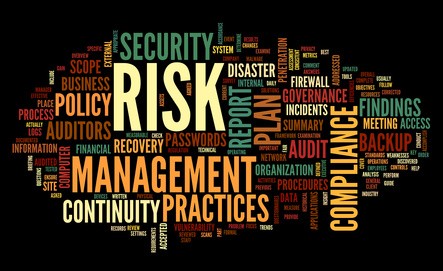Russia Currency Risk
Post on: 27 Апрель, 2015 No Comment

by Joshua B. Tulgan | August 24, 2012 at 3:08 pm
Even with Russia’s entrance into the World Trade Organization this summer, there remains a stubborn gap in perception and reality of the risks of doing business in the country. Admittedly, Russian stocks, a barometer of sorts for investor attitude toward Russia as a whole, remain undervalued relative to their peers for real reasons, such as the volatility of the ruble. But lingering and unsubstantiated negative perceptions about risks in the country continue to permeate the thinking of businesses and market analysts, which masks the improving operating environment and significant opportunities in the market.
Indeed, since the global financial crisis of 2008, a combination of government-backed and private initiatives have ensured that more and more Russian companies are successfully integrating sophisticated risk management controls, and their leadership is heralding a new chapter in Russian corporate governance. In fact, Russian companies are providing the assurances on managing risk that global investors need to make smart investments in the country’s burgeoning economy, where average household earnings increased 10% last year—during a time when many other economies saw continued declines in earnings—and where household debt is virtually non-existent. In general, Russian companies have made significant improvements in developing best practices for financial and operational risk management.
Financial Risk
With a strong resource base, Russian companies are by their nature global, as most of the largest firms sell products domestically and internationally. The currency and operational risks inherent through the import of sophisticated machinery or other products and services is therefore negated by the sale of goods and services abroad. Despite the proliferation of ruble-based financial instruments, many Russian companies can look to markets in Europe or the United States for capital-raising without incurring unnecessary currency risk. A range of Russian companies—in the financial sector, resource economy or service sectors—continue to utilize Eurobond markets, while others, most recently a prominent freight hauler, have tapped equity markets for further capital needs.
But for some companies, managing currency risk is a continuous exercise, as they may collect revenue and make expenditures in different currencies. But strategic and thoughtful treasury strategies, including being opportunistic in finding pools of liquidity and developing currency hedging strategies, ensure that companies are not incurring too much currency risk.
This includes using the existing credit sources in Russia. After the financial crisis of 2008, with funding cut off from Europe and the United States and the ruble weakened by a global and Russian monetary policy, the ruble bond market became a primary source of much-needed liquidity. The benefits continue today: in the past four years, the total volume of ruble-denominated corporate bonds outstanding has nearly doubled to close to RUB 4 trillion rubles ($125 billion). A strong ruble market has allowed companies to better match revenues with obligations, the most basic and sensible way to manage currency exposure. But there are challenges: despite the growth in the ruble market, tenors are short by comparison.
As a result, another important strategy is to actively manage the dollar/euro exposure. Soon after liquidity returned to the markets in 2010, companies began to actively hedge interest payments and principal repayments. Having more non-ruble debt hedged means Russian companies have further flexibility to increase non-ruble exposure, a critical factor considering that despite its improvements, the ruble debt markets remain far tighter than Western markets.
By nature, ruble markets remain volatile. Russian financial institutions are among the most active borrowers on Western markets, and these institutions in turn offer liquidity to Russian borrowers. The absence of currency controls ensures that economic developments in the United States, Europe and Asia exacerbate capital flows into and out of Russia. However, in the past four years, markets and instruments have developed to the point that Russian companies focused on both international and domestic markets can manage their risk broadly.
Operational Risk
Virtually every business and market has felt the pinch of stagnant economic performance over the past four years. In Russia, however, there is a strong domestic market for a variety of goods and services as a result of serving global markets for the last several years. The challenge for any company, though, is to manage these markets by minimizing any associated operational risks.
Before the crisis, a significant amount of operating costs for some companies were dominated in dollars or euros pegged to a floating currency rate. With widespread ruble appreciation from 2005 to 2008, this was a common and advantageous practice, as the import of equipment often required foreign-sourced parts or servicing. The combination of a more relaxed monetary policy on top of the capital flight during and after the crisis caused the ruble to decline roughly 50% of the value of the dollar. Thus, any operating expense defined in non-local currency cost nearly twice as much, which naturally affects profitability.
As soon as the ruble began weakening in the fall of 2008, some Russian companies began to review contracts and push vendors and suppliers to adopt ruble-based contracts. Other sectors can avoid this risk altogether: in the metals industry, where inputs are either pegged to global prices or machinery and parts are sourced from abroad, internal contracts for steel products are often denominated in U.S. dollars. Any commodity not priced in dollars naturally trends with global markets, effectively making them pegged one way or another to a non-ruble price. Risk is then passed to consumers, who shoulder the burden of currency volatility. Though no company can fully eliminate currency risks, by effectively managing exposure to these risks, companies can better safeguard operations and invest what is necessary to grow and sustain markets.
Overall, Russian companies are showing leadership and making great strides in being transparent about their business operations, including being up front about the strategies they are taking to mitigate financial and operational risks.














